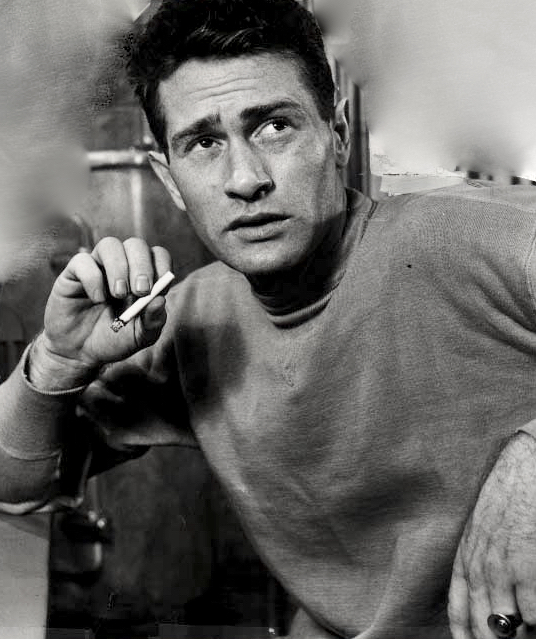The actor Darren McGavin was born with the unremarkable real name William Richardson in 1922 into a very rocky family. By the mid 1930’s, the heart of the great Depression, his parents were divorced and he was living with family friends on a farm outside Tacoma. He ran away a couple times, stayed with a native Nisqually family for awhile and then lived on his own until his traveling salesman father tracked him down and settled him at the Jessie Dyslin’s Boys’ Ranch. He was 13 years old. He lived at the boys ranch in Tacoma for more than three years until he was 16 and rode out the worst

years of the Great Depression in the crowded but safe surroundings of the ranch. He also developed a lifelong affection for the seaport city. Eventually the boy drifted to California and by the end of the Second World War he was painting scenery at Columbia Studios in Hollywood. Like a scene in a movie he tried out for a small part in a big budget film starring Cornel Wilde as Frederick Chopin and Merle Oberon as George Sand. A Song to Remember (1945) made Darren McGavin an actor and he went on to perform in theatre on Broadway, work his way up as a movie star and eventually become a familiar character on television.
In October 1967 the Dyslin’s Boys Ranch opened the South Tacoma Value Village Thrift store as a means of support and McGavin attended as a celebrity alumni. He brought with him a collection of auction items donated by Hollywood
friends like Bob Hope, Henry Fonda, Steve McQueen, Barbara Streisand and Red Skelton. His visit “back home to Tacoma”, as he called it, was no small event in the city. He received a key to the city from Mayor Harold Tollefson and charmed dinner guests with a story about his first starring role in a movie. It was made by the boys at the Dyslin Ranch in the 1930’s where he took a fall off a bucking cow for the camera. By the mid 1960’s McGavin had played in films like Summertime with Katherine Hepburn and starred in award winning The Man With the Golden Arm.
At the time he was best known as a television star having played the hard boiled detective Mike Hammer in a popular series.
The kid from the Tacoma orphan’s home was a major figure in American popular culture at a time when Tacoma was struggling for its own distinct identity and social balance. In a way, the attention he brought to a new thrift store in South Tacoma highlighted the increasingly fractured character of the city. In the late 1950’s, I-5 split Tacoma into separate political and economic parts followed by the creation of the Tacoma Mall in the mid 60’s that isolated and strangled the traditional downtown core and further separated neighborhoods, North and South. In the next few years following Darren McGavin’s star turn in Tacoma, the Mayor who presented him the key to Tacoma would be defeated by A.L. Slim Rasmussen from the south side. Bitter political fighting would break out and north-south tribal arguments over government control and management, open housing, civil rights, and neighborhood development would lead to a recall and overthrow of a majority of the City Council. Misguided efforts to save the downtown by tearing most of it down to build parking garages and pedestrian plazas stumbled along as blocks of merchant shops and professional office buildings were demolished. The architectural survivors, like the grand Rhodes Department Store at 11th and Broadway, became vacant and empty.

Meanwhile Darren McGavin’s star continued to rise. In 1972 he was cast as a vampire chaser in the television movie The Night Stalker which went on to become a regular series called Kolchak: The Night Stalker. Then in 1983 McGavin agreed to play Ralphie’s irascible but caring old man in A Christmas Story, a film version of writer and radio storyteller Jean Shephard’s nostalgic childhood memories of pre mall Christmas in America. In it, the old man takes both his family and the audience downtown to a time and place of department store Santas, animated display windows full of model railroad layouts and sidewalks full of Christmas shoppers and dreamers. The film is full of corny moments, painful memories and personal history remembered through a foggy but hopeful lens. It always makes me think of a kid from Dyslin’s ranch in the late 30’s standing in downtown Tacoma at Christmas.
Here’s Jean Shephard’s original Christmas story of the Red Ryder BB gun as told on the radio.

This is a wonderful Christmas story!! You nailed it again Michael Sean Sullivan! Thank you.. Donna
LikeLike